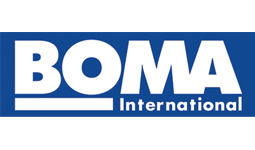Can I Pressure Clean Graffiti?
Graffiti can be an incredible form of artistic expression, but when it defaces your property, it becomes an eyesore. With the right tools and techniques, you can reclaim your space.
Pressure washing is one of the most effective methods for washing off the toughest stains, marks, and blemishes. But before you start firing away at unsightly graffiti, we’re here to walk you through the steps for prepping and pressure-washing graffiti quickly and effectively.
Assessing the Surface
Before starting the graffiti removal process, it’s important to consider the type of surface it’s being washed off of. Setting the pressure too high on surfaces such as wood or previously painted surfaces could lead to property damage and damage to the intentional paintwork underneath the graffiti.
Likewise, setting the pressure too low on surfaces like metal, stone, or concrete would do little to nothing to remove the unwanted graffiti. It’s recommended to use a PSI of 500 for softer wood surfaces, 1500 PSI for hardwoods, and 2000–3000 PSI for metal, stone, and concrete.
Assembling the Right Tools
You’ll need to gather the right equipment to effectively remove graffiti using a pressure washer. Here’s what you’ll need:
Pressure Washer
The first thing you’ll need is the pressure washer itself. There are various types of pressure washers, so you’ll want to be sure you get the right one for the job to prevent structural damage or rework.
Quality Detergent
A high-quality soap or detergent is crucial to remove graffiti. To err on the side of caution, it’s best to stick with non-toxic and eco-friendly detergents, as these tend to be less harsh on surfaces and safer to use for longer periods.
Brushes & Scrubbing Tools
In some cases, you may need to do some scrubbing to fully remove the graffiti, especially if it’s been there for a while. Having a variety of brushes and scrubbing tools can help you tackle any stubborn spots.
Protective Equipment
Safety should always be a priority when using a pressure washer, as improper use can lead to injuries. Personal protective equipment such as safety goggles, gloves, and sturdy footwear should be worn to help protect you from possible injuries from high-pressure water or chemical splashes.
The Pressure Washing Process
Once you’ve gathered all your supplies, it’s time to pressure wash some unwanted graffiti. Here’s the step-by-step guide for what to do:
Clear the Area & Prep the Surface
Before you start, assess the area to determine the type of surface you’re dealing with. This will help you decide how much pressure to apply to avoid damaging the walls.
Cover any surfaces that could be damaged by high-pressure water. Some light scrubbing may be required, depending on how long the graffiti has been there.
Safety First: Suit Up & Set Up Your Pressure Washer
Safety is paramount when using a pressure washer. Put on your protective equipment before you start. Once you’ve suited up, get your pressure washer ready. If you’re using one for the first time, read the manual to learn about safety precautions and how to operate the machine.
Next, fill the detergent tank of your pressure washer with your detergent of choice and equip the appropriate tip. The soap tip should be wide to avoid damaging the surfaces you’re cleaning.
Remember, the smaller the opening, the higher the velocity. The wider the opening, the lower the velocity.
Start Washing Using a Sweeping Motion
When you’re ready to start pressure washing, place yourself approximately two feet away from the surface. Choose a small area to test the pressure washer.
Check to see if there’s any damage after spraying. If everything is fine, start work on the larger area, moving the pressure washer back and forth in even, horizontal strokes.
Allow the Cleaning Solution To Work Its Magic
After you’ve sprayed the area with your detergent solution, let the suds sit for a while. This helps to completely loosen the graffiti before the final rinsing.
Time To Rinse
After the detergent has had time to work, rinse away the soapy grime with clean water. Rinsing should also be done in the same order as the cleaning, that is, top-down.
Start where the soap solution has been sitting the longest to ensure that the soap doesn’t stick to the surfaces and that all the detergent has been removed.
Repeat the Process or Use Brushes for Stubborn Spots
If there’s still some graffiti left on the wall after rinsing, you can use a brush to scrub off the remaining pieces. Then rinse the surfaces again to remove the unwanted graffiti and restore the surface’s appearance.
Get Professional Graffiti Removal Services
Remember, pressure washing for graffiti removal can be a significant investment, but only if done correctly. If you’re uncomfortable doing it yourself, consider hiring professionals with the expertise and equipment to do the job efficiently and safely.
At KEVCO Building Services, no graffiti is too tough for our team. We can restore your building to its pristine condition with our expert pressure-washing techniques, and you can rest easy knowing a professional is on the job.
Call (301) 258-9750 to schedule expert pressure washing services.








